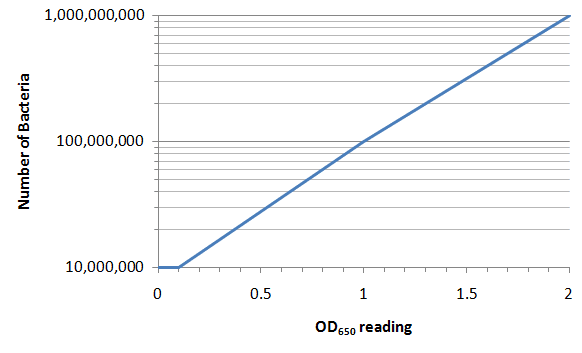Light scatter (spectrophotometer)
 So a direct count is a straightforward and relatively quick, but labour intensive, way to figure out how many Vibrio are in the water. Wouldn't it be nice to get a machine to do the counting for us?
So a direct count is a straightforward and relatively quick, but labour intensive, way to figure out how many Vibrio are in the water. Wouldn't it be nice to get a machine to do the counting for us?
One way we can do this is to use a spectrophotometer. A spectrophotometer doesn't exactly count the bacteria, but it does measure how much they interfere with a light beam, and based on that, we can use a standard curve to decide how many bacteria there are. Then we can do the scaling up trick to get the total population size. (For more details about the relationship between optical density and concentration (Beer’s law) click here.)
This is a great method if you already have a standard curve -- perhaps you work in a lab that has been studying this particular critter for years... Otherwise, you may need to spend a couple of days preparing the standard curve. That means growing the cultures, taking the spectrophotometer readings (optical density, or OD for short), comparing them to plate counts or counts under the microscope... that sort of thing.
Here's an example of a standard curve that shows the relationship between OD measured at 650 nm and the number of bacteria per mL:

For example, if you prepared a sample and got a spectrophotometer reading of 0.5, you would find 0.5 on the x-axis and read the bacterial count off the y-axis -- about 26 million/mL.
How about a spectrophotometer reading of 0.9? (Be careful with the log scale for bacteria!!)
If your sample had about 12 million bacteria per mL, what OD reading would you expect?
Copyright University of Maryland, 2007
You may link to this site for educational purposes.
Please do not copy without permission
requests/questions/feedback email: mathbench@umd.edu